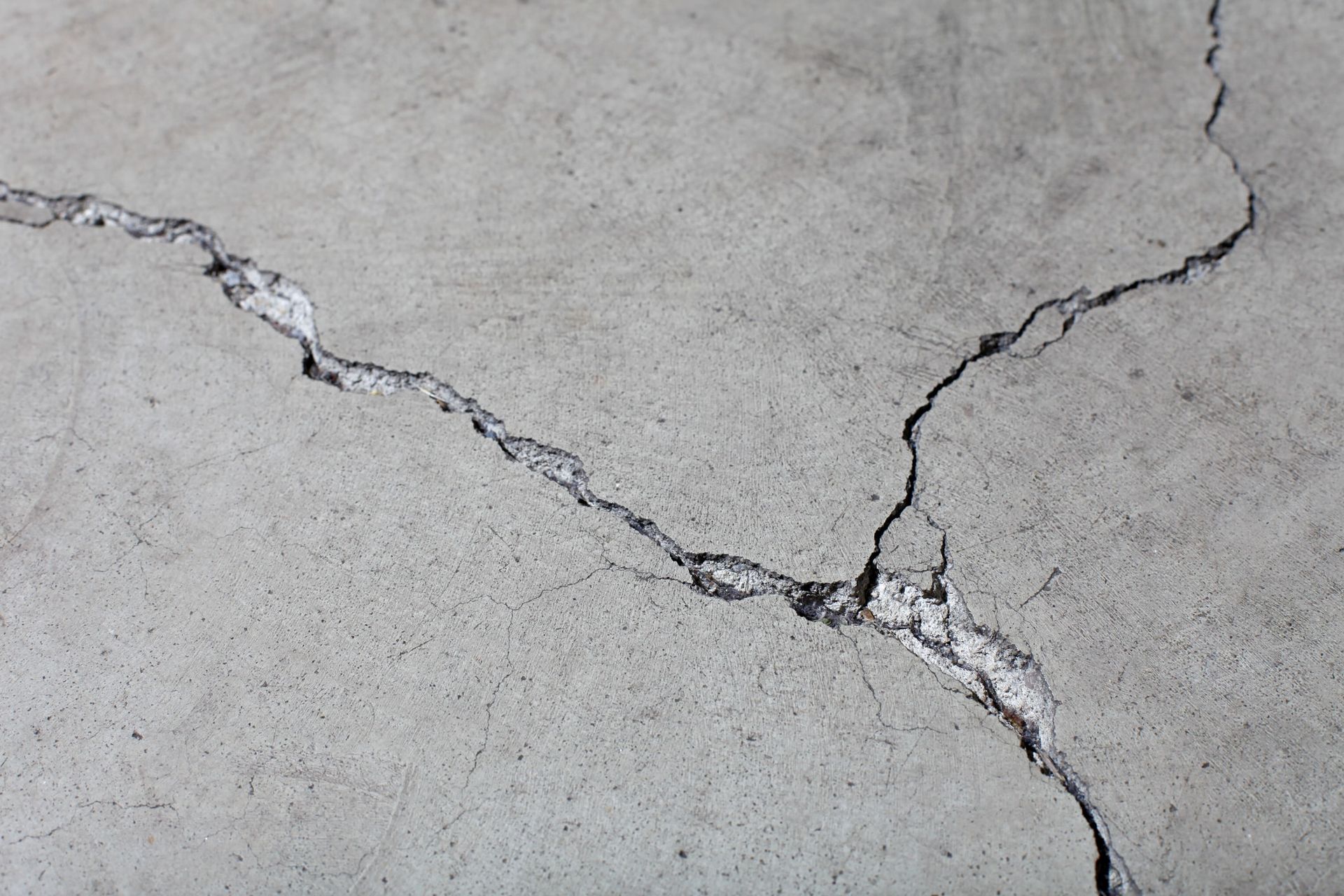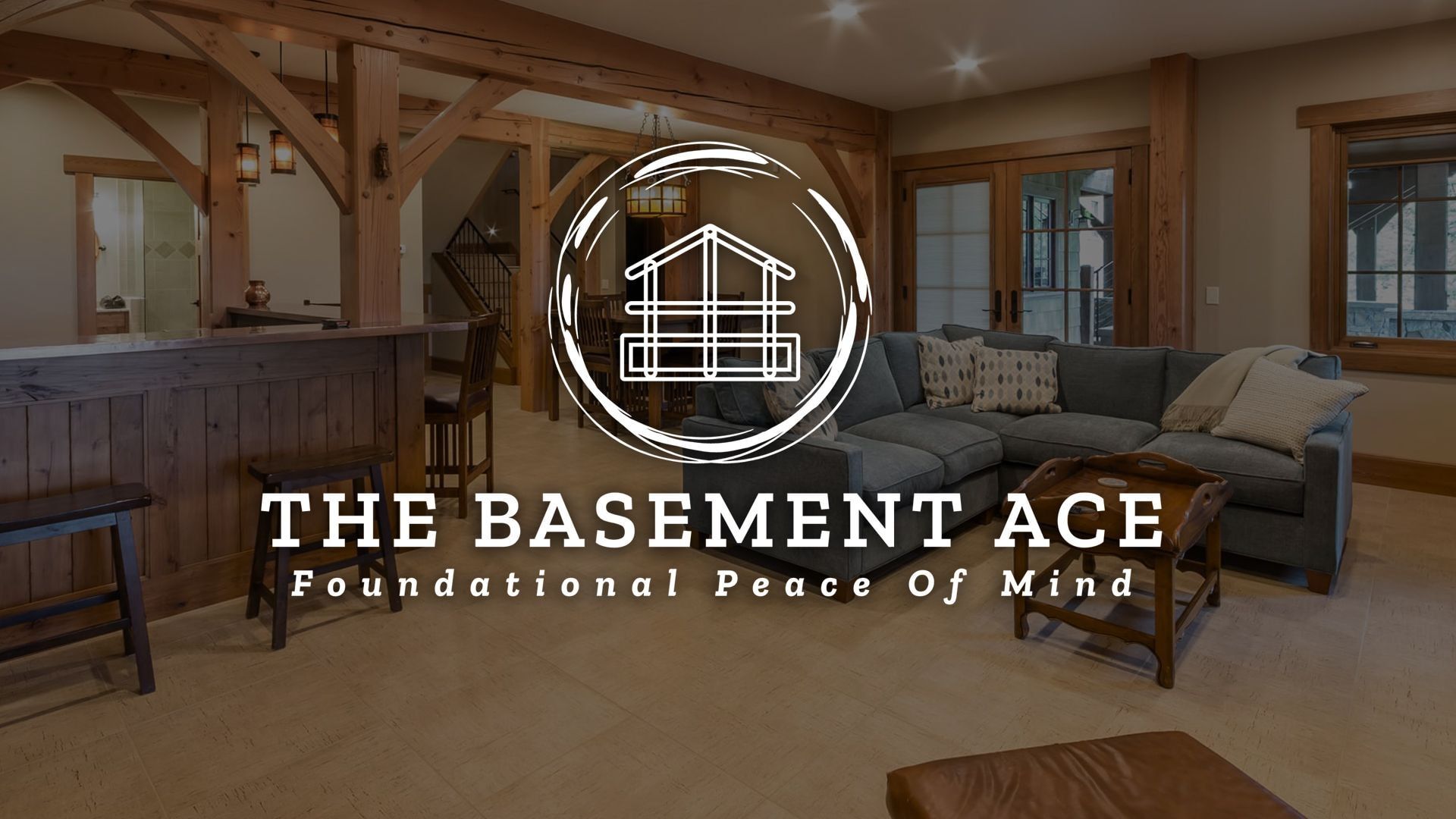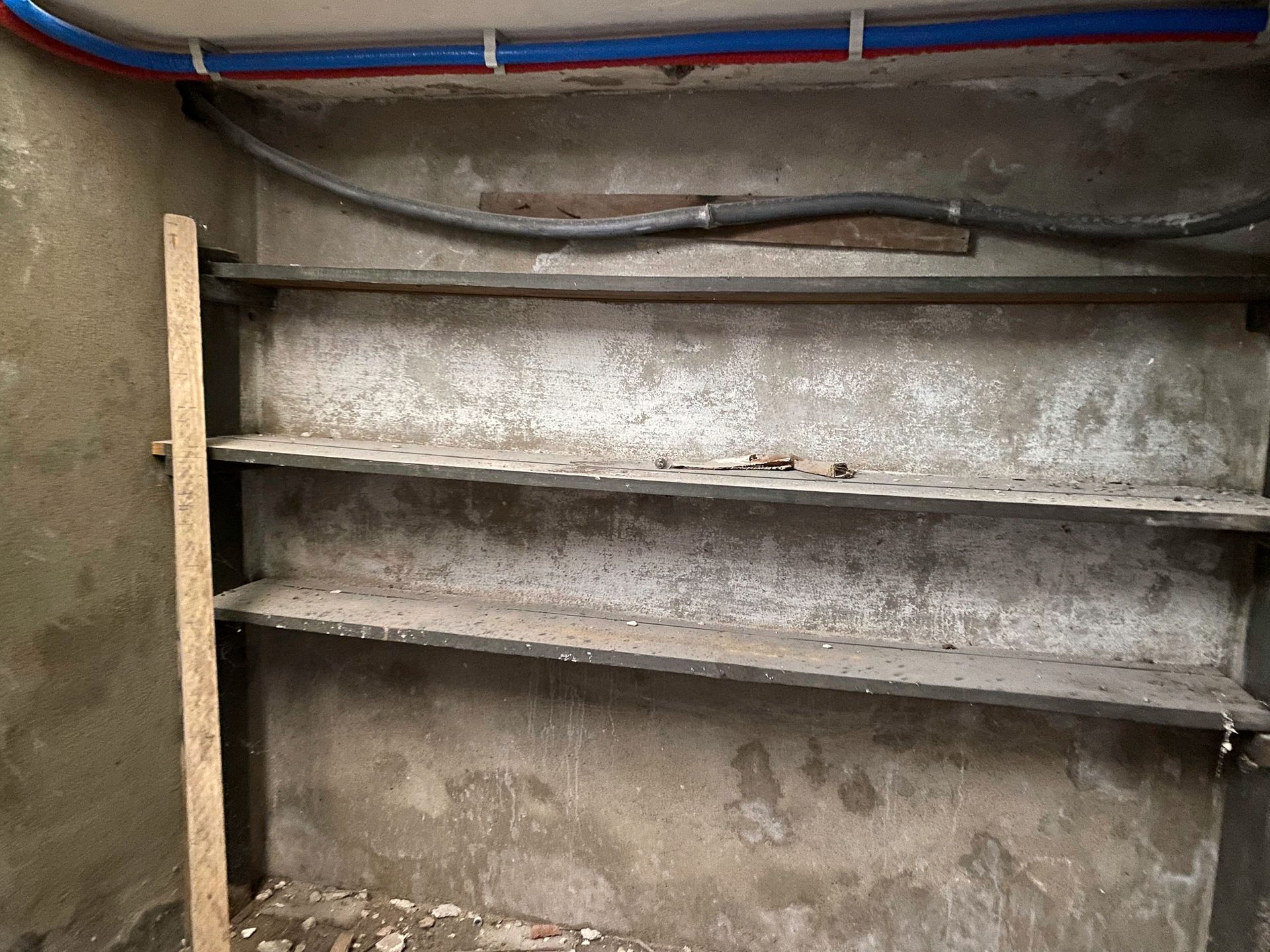Basement Floor Crack: Causes and Effective Repair Solutions
Basement floor cracks are common and can be caused by various factors like settling concrete shrinkage and poor construction. Understanding why these basement floor cracks occur and knowing how to address them is crucial for homeowners. In this article, we’ll dive into the different types of basement floor cracks, their causes, and effective repair solutions to ensure your home’s stability. Addressing a basement floor crack promptly can prevent further damage and maintain the integrity of your home.
Key Takeaways
- Basement floor cracks can be categorized into hairline cracks, cracks over 1/8 inch wide, and uneven cracks, each indicating different underlying issues that may require varying levels of intervention.
- Common causes of basement floor cracks include normal settling, concrete shrinkage, stress, and poor construction, with some cracks indicating serious foundation problems requiring professional evaluation.
- Preventative measures such as proper drainage, soil stabilization, and regular inspections can significantly reduce the risk of basement floor cracks, ensuring the long-term integrity of the foundation.

Recognizing Basement Floor Cracks
Cracks in basement floors can appear in various forms, from straight lines to spiderweb patterns and irregular shapes, each indicating different potential issues. Identifying these basement cracks and their implications, including any floor crack, is crucial for effective repair.
Basement floor cracks can be categorized into three main types: hairline cracks, cracks over 1/8 inch wide, and uneven cracks. Each type has unique characteristics and requires specific attention.
Hairline Cracks
Hairline cracks are often the result of concrete shrinkage as it dries and cures. These fine cracks typically do not pose significant problems unless they show signs of growth. Keep an eye on hairline cracks to ensure they don’t expand into larger problems.
Although typically cosmetic, monitor any changes in width or length, especially if moisture is present.
Cracks Over 1/8 Inch Wide
Cracks wider than 1/8 inch can be more concerning and should prompt a call to a foundation repair specialist. These cracks can result from heaving, leading to larger cracks and lifting of the basement floor surface. In some cases, cracks from heaving may develop in a circular pattern due to localized soil expansion.
Moisture in these cracks may suggest more serious underlying problems requiring professional evaluation.
Uneven Cracks
Uneven cracks often signal significant foundation problems such as settling or heaving. These cracks can cause a resulting uneven surface, which may be a sign of foundation sinking or heaving—critical issues that require immediate attention.
Foundation settling can create uneven basement floors; large or expanding cracks in foundation walls need professional evaluation to avoid further damage.

Common Causes of Basement Floor Cracks
Before:
Knowing the common causes of basement floor cracks helps in effective prevention and repair. These cracks can be classified into structural and non-structural types based on their causes and implications. Common reasons for basement floor cracks include normal settling, concrete shrinkage, stress, and poor construction. While some cracks are purely cosmetic, others may signal deeper foundation problems requiring immediate attention.
After:
Common causes of basement floor cracks include:
- Normal settling
- Concrete shrinkage
- Stress
- Poor construction
These cracks can be classified into structural and non-structural types based on their causes and implications. While some cracks are purely cosmetic, others may signal deeper foundation problems requiring immediate attention.
The three main causes include shrinkage cracks, settling cracks, and heaving.
Shrinkage Cracks
Shrinkage cracks occur as a result of concrete drying and curing. As the concrete dries, it loses moisture and decreases in volume, leading to the development of fine cracks. Regular checks and timely repairs can stop these cracks from becoming larger structural problems.
Managing the drying process well can reduce shrinkage cracks, though they are often inevitable in a large concrete slab.
Settling Cracks
Settling cracks may develop as the soil beneath the foundation settles unevenly. These cracks appear when the foundation sinks due to the weight of the home and soil movement. The presence of tree roots can also contribute to heaving by affecting soil stability.
Uneven basement slabs can indicate foundation issues related to soil movement or poor compaction.
Heaving
Heaving in basements is primarily caused by wet clay soil, which creates upward pressure on the foundation. Moisture problems in conjunction with heaving cracks typically necessitate the involvement of a professional contractor.
Using techniques like compaction grouting and soil reinforcement can stabilize soil and prevent the movement that causes cracks. Tackling the root cause of heaving prevents recurring problems.

Signs Your Foundation Needs Repair
Ignoring early signs of foundation issues can lead to more extensive damage and increased repair costs over time. Identifying signs that your foundation needs repair is key to maintaining your home’s structural integrity. Wider cracks can be symptomatic of soil movement or foundation issues and should be evaluated by professionals. Routine inspections enable early detection of cracks and other issues, preventing serious structural damage.
Let’s examine the key signs: wall cracks, uneven floors, and sticking doors and windows.
Wall Cracks
Cracks extending from the basement floor to the basement walls suggest that there may be movement in the foundation. Vertical and horizontal foundation cracks in the walls can signal that the foundation is sinking or shifting. Horizontal cracks are particularly alarming as they are often due to lateral pressure from soil and water buildup against the walls.
Evaluate wall cracks by checking dimensions, patterns, and water signs; seek professional help for significant cases.
Uneven Floors
Uneven floors serve as a critical warning sign that your home’s foundation may be experiencing issues. Cracks that extend from the basement floor to the wall indicate potential foundation movement. Heaving can occur due to upward pressure from frost or expansive soil, resulting in uneven floors.
Recognizing these signs of uneven floors helps homeowners take timely action and seek professional evaluation to avoid a tripping hazard.
Sticking Doors and Windows
Doors and windows that fail to open or close smoothly can be a consequence of foundation settlement. This issue often accompanies other signs of foundation problems such as wall cracks and uneven floors.
Early recognition of these symptoms can prevent severe structural damage and expensive repairs.
DIY vs. Professional Repairs
When it comes to basement floor cracks, deciding between DIY repairs and professional services can be challenging. Evaluating basement floor cracks is key; minor ones can be DIY projects, while severe cracks need professional attention. While DIY can save costs, it often requires significant time for research, preparation, and execution.
The Basement Ace combines modern techniques with durable materials to effectively repair basement floor cracks. We will discuss simple crack sealing and when to engage a professional.
Simple Crack Sealing
Using epoxy or concrete sealant is effective for sealing small cracks to prevent water and moisture entry. Concrete caulk is best for filling narrow cracks as it can flex with the concrete’s natural movement.
Sealing small, non-structural cracks prevents water intrusion, avoiding further damage over time. This method is suitable for minor repairs that do not indicate deeper structural issues.
When to Hire a Pro
Persistent moisture issues or signs of structural damage are key indicators that it’s time to consult a professional for basement repairs. Homeowners should contact a foundation repair contractor if they notice cracks with heaving. Excessive foundation settling may require professional inspection to assess the need for stabilization.
Knowing when to involve professionals ensures your home’s long-term stability and safety.

The Basement Ace's Approach to Basement Floor Cracks
The Basement Ace takes a comprehensive approach to addressing basement floor cracks, focusing on quality and customer satisfaction. Professional repairs ensure long-term durability and stability of the concrete basement floor, preventing future issues.
The Basement Ace offers a variety of services tailored to the specific needs of homeowners facing basement floor cracks. We will cover their consultation process, quality installation services, and waterproofing solutions.
Consultation Process
The Basement Ace’s consultation involves discussing unique homeowner concerns and creating a tailored repair plan. This personalized approach ensures effective and long-lasting solutions for basement problems. The consultation thoroughly evaluates basement issues and aligns the repair plan with the homeowner’s needs.
Quality Installation Services
High-quality materials and expert craftsmanship are utilized to ensure that repairs withstand wear and last over time. The installation services prioritize minimal interruption and use premium materials for lasting repairs.
Professional repairs ensure the basement floor’s long-term durability and stability, preventing future problems.
Waterproofing Solutions
Waterproofing helps prevent moisture issues that could lead to future floor cracks. Basement waterproofing is crucial for maintaining the structural integrity of your home and preventing moisture-related issues. Professional waterproofing services ensure that the materials used and installation techniques are effective in addressing potential leaks.
Waterproofing helps homeowners maintain a dry, healthy basement and avoid future costly repairs.
Preventative Measures for Basement Floor Cracks
Regular maintenance can significantly reduce the likelihood of cracks appearing in basement floors. Waterproofing methods can significantly reduce future basement floor cracks by controlling moisture levels. Routine inspections enable early detection of cracks and other issues, preventing serious structural damage.
Let’s explore proper drainage, soil stabilization, and regular inspections as key preventative measures.
Proper Drainage
Establishing effective drainage systems around the home helps alleviate water pressure on the foundation, reducing the risk of cracks. Installing a French drain and drain tile around the perimeter of the home can significantly lower water pressure on the foundation.
Proper drainage around a home reduces water pressure on the foundation, preventing cracks. Proper drainage is crucial for maintaining the integrity of your home’s foundation and preventing moisture-related issues.
Soil Stabilization
Soil stabilization involves techniques that enhance the load-bearing capacity of the ground, minimizing risks of heaving or settling. Implementing soil stabilization techniques can minimize the risks of ground heaving and settling that contribute to basement floor cracks.
This proactive approach helps ensure the long-term stability of your home’s foundation.
Regular Inspections
Routine inspections can help identify early signs of cracking before they develop into major issues, potentially saving on significant repair costs. Proper drainage around the home reduces water pressure on the foundation, helping prevent cracks.
Incorporating regular inspections and these preventative strategies will help maintain the integrity of your basement and prevent future issues.
Summary
Maintaining a crack-free basement floor is essential for the overall structural integrity and value of your home. Understanding the types of cracks, their causes, and the appropriate repair methods can help you address issues promptly and effectively. Whether opting for DIY repairs or professional services, taking proactive measures to prevent cracks will save you time, money, and stress in the long run. Remember, a well-maintained basement floor contributes to a healthy, stable home environment.
Frequently Asked Questions
How do I fix cracks in my basement floor?
To repair cracks in your basement floor, apply a concrete patch to fill the crack, ensuring a smooth finish with a putty knife. Allow the patch to dry completely before sealing it, and give it several days to cure properly.
What services does The Basement Ace offer?** **?
The Basement Ace provides a comprehensive range of services including foundation repair, basement waterproofing, wall stabilization, sump pump installation, humidity control, mold remediation, and structural repairs. These services ensure the integrity and safety of your home.
What is the purpose of The Basement Ace's consultation process?** **?
The purpose of The Basement Ace's consultation process is to establish trust and alignment by addressing the client's unique home needs, concerns, and goals, ultimately ensuring peace of mind. This approach fosters a personalized experience tailored to the client's vision.
How does The Basement Ace ensure the quality of their installation services?** **?
The Basement Ace ensures the quality of their installation services by employing skilled craftsmanship and utilizing high-grade materials, while also committing to minimal disruption and maintaining a clean workspace. This approach guarantees a reliable and professional installation experience for clients.
What are some signs that indicate a foundation needs repair?** **?
Clear indicators that a foundation requires repair include cracks in the foundation walls or floors, sticking doors or windows, uneven flooring, gaps around window frames, and water intrusion in the basement. Addressing these signs promptly is crucial to prevent further damage.

All Rights Reserved | The Basement Ace (Formerly Basement Authorities NH)

